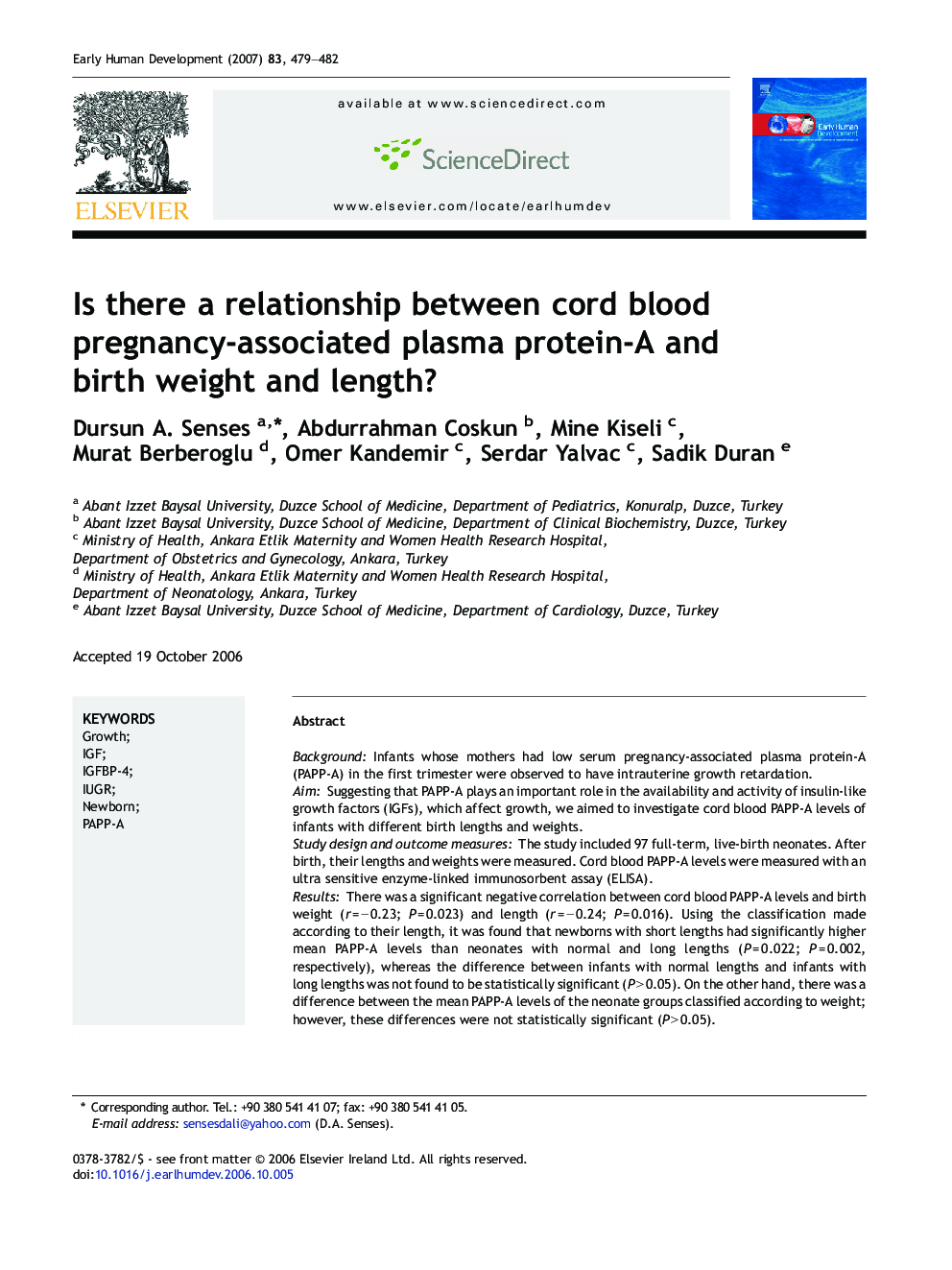| Article ID | Journal | Published Year | Pages | File Type |
|---|---|---|---|---|
| 3918322 | Early Human Development | 2007 | 4 Pages |
BackgroundInfants whose mothers had low serum pregnancy-associated plasma protein-A (PAPP-A) in the first trimester were observed to have intrauterine growth retardation.AimSuggesting that PAPP-A plays an important role in the availability and activity of insulin-like growth factors (IGFs), which affect growth, we aimed to investigate cord blood PAPP-A levels of infants with different birth lengths and weights.Study design and outcome measuresThe study included 97 full-term, live-birth neonates. After birth, their lengths and weights were measured. Cord blood PAPP-A levels were measured with an ultra sensitive enzyme-linked immunosorbent assay (ELISA).ResultsThere was a significant negative correlation between cord blood PAPP-A levels and birth weight (r = − 0.23; P = 0.023) and length (r = − 0.24; P = 0.016). Using the classification made according to their length, it was found that newborns with short lengths had significantly higher mean PAPP-A levels than neonates with normal and long lengths (P = 0.022; P = 0.002, respectively), whereas the difference between infants with normal lengths and infants with long lengths was not found to be statistically significant (P > 0.05). On the other hand, there was a difference between the mean PAPP-A levels of the neonate groups classified according to weight; however, these differences were not statistically significant (P > 0.05).ConclusionWe concluded that increased cord blood PAPP-A levels were associated with birth length and weight decreases; however, PAPP-A levels affected birth length more than birth weight.
